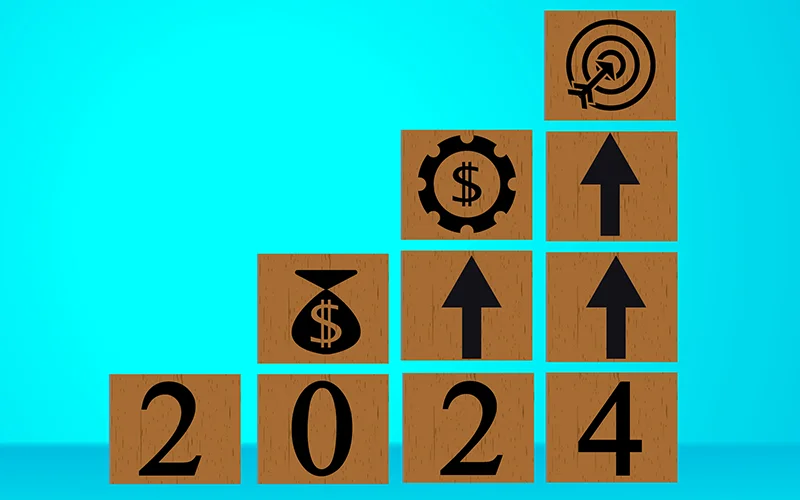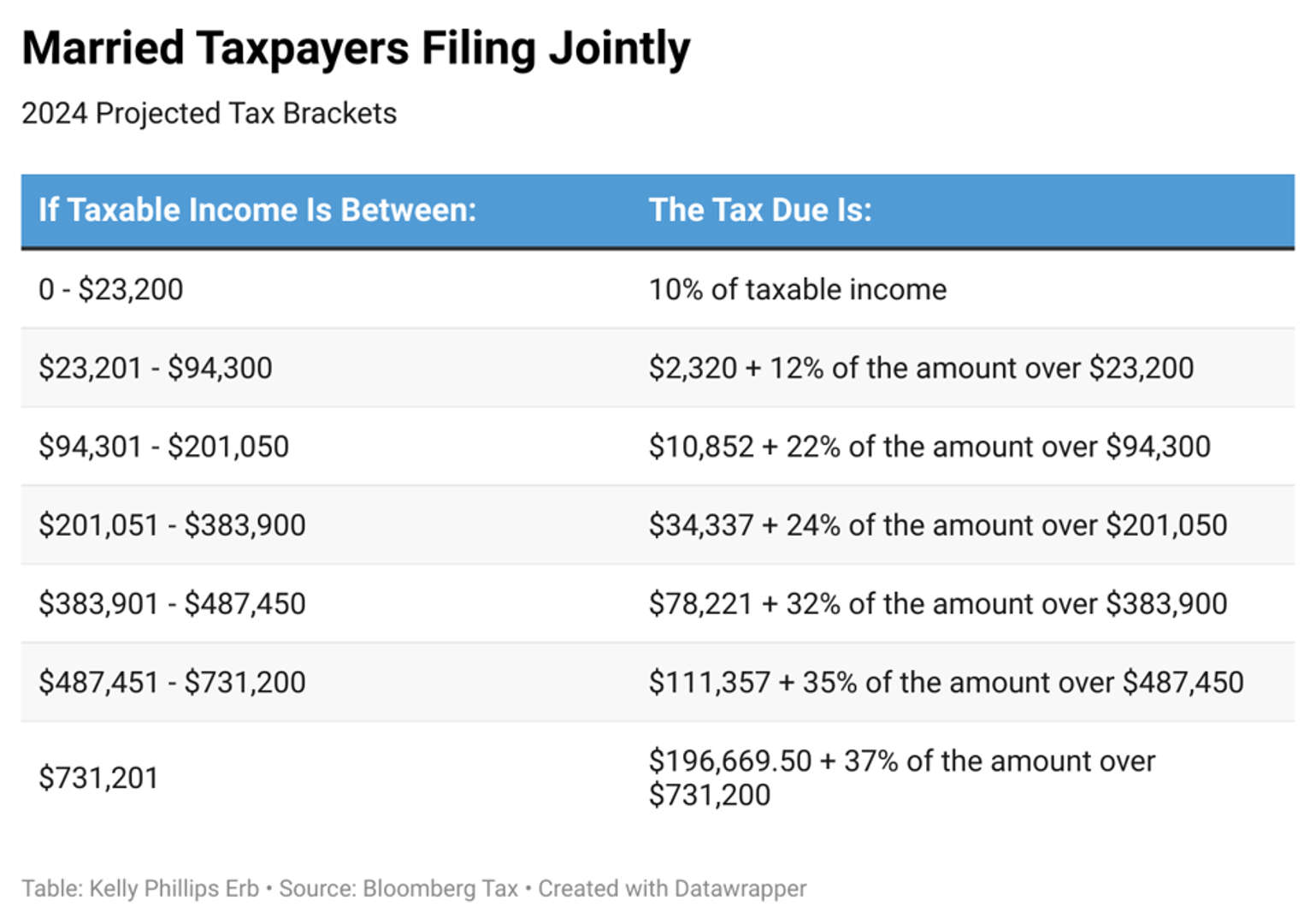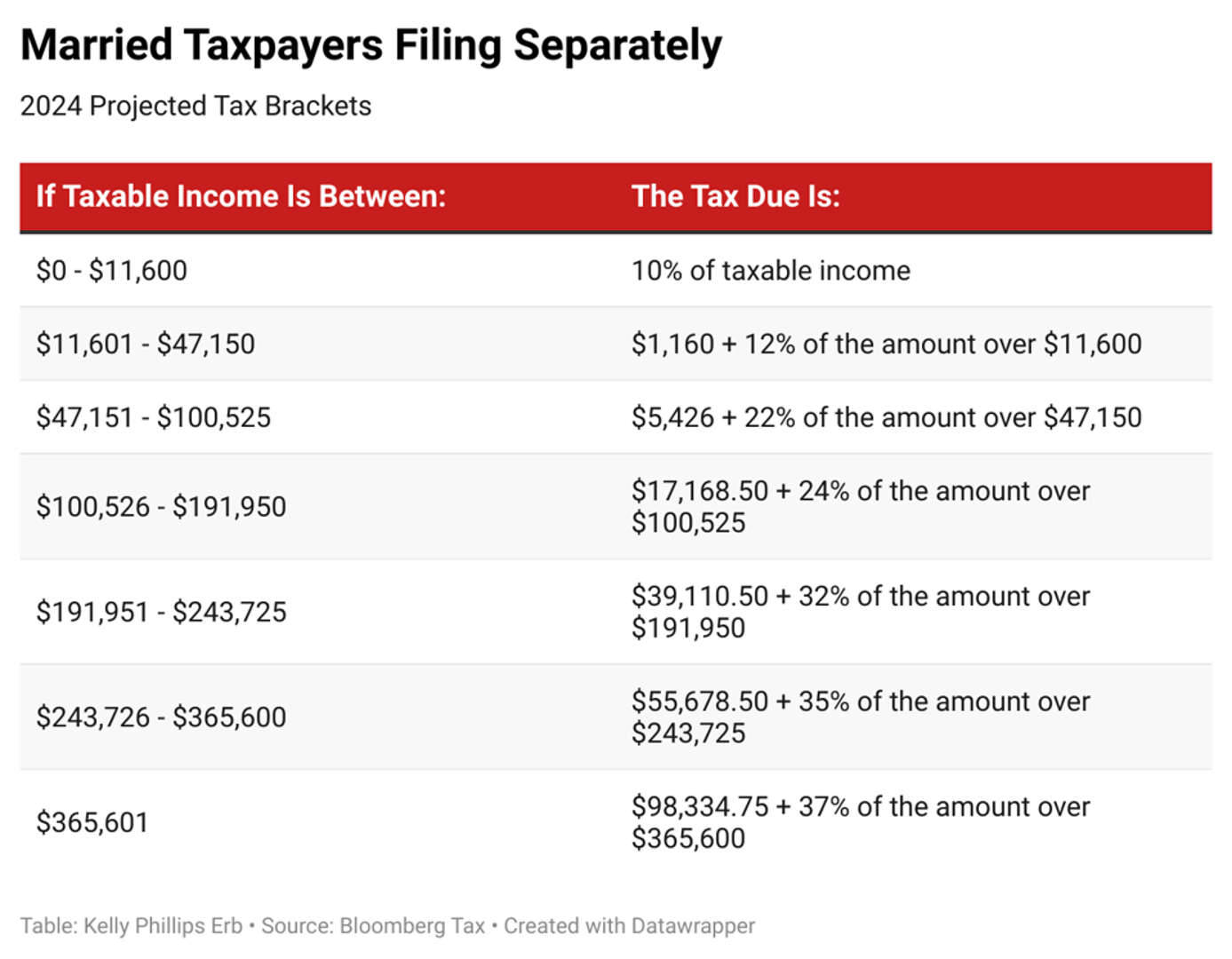From Forbes — By Kelly Phillips Erb
The U.S. Bureau of Labor Statistics reported that the consumer price index (CPI) increased by 0.6% in August after rising 0.2% in July. You won’t just feel the impact of those boosts in your wallet—you’ll also see them on your tax forms. Those higher numbers push out deduction limitations and will result in upward adjustments to tax brackets and increases to other key thresholds.
According to Bloomberg Tax & Accounting, inflation-adjusted amounts in the tax code will increase by 5.4% from 2023. While this is a slight decrease from the 7.1% increase taxpayers felt in 2023, it is nearly double the 2022 increase of 3%.
“For the second year in a row, high U.S. inflation has contributed to a significant increase in inflation-adjusted amounts in the tax code,” said Heather Rothman, Vice President, Analysis & Content, at Bloomberg Tax & Accounting.
How does that translate to dollars? Bloomberg Tax has released its annual Projected U.S. Tax Rates Report, giving you an early look at what brackets and other key tax figures will look like in 2024. Rothman says, “Once again, our annual report provides actionable projections for tax professionals and taxpayers to begin planning for the upcoming year ahead of the official IRS announcement.”
Here’s a look at the projected numbers for the tax year 2024, beginning Jan. 1, 2024. These are not the tax rates and other numbers for 2023 (you’ll find the official 2023 tax rates here).
Tax brackets
Here are what the rates are expected to look like in 2024:
Capital Gains
Capital gains rates will not change in 2024, but the brackets for the rates will change. Most taxpayers pay a maximum 15% rate, but a 20% tax rate applies to the extent that taxable income exceeds the thresholds set for the 37% ordinary tax rate. Exceptions also apply for art, collectibles, and section 1250 gain (related to depreciation).
Bloomberg Tax anticipates that the maximum zero rate amounts and maximum 15% rate amounts will break down as follows:
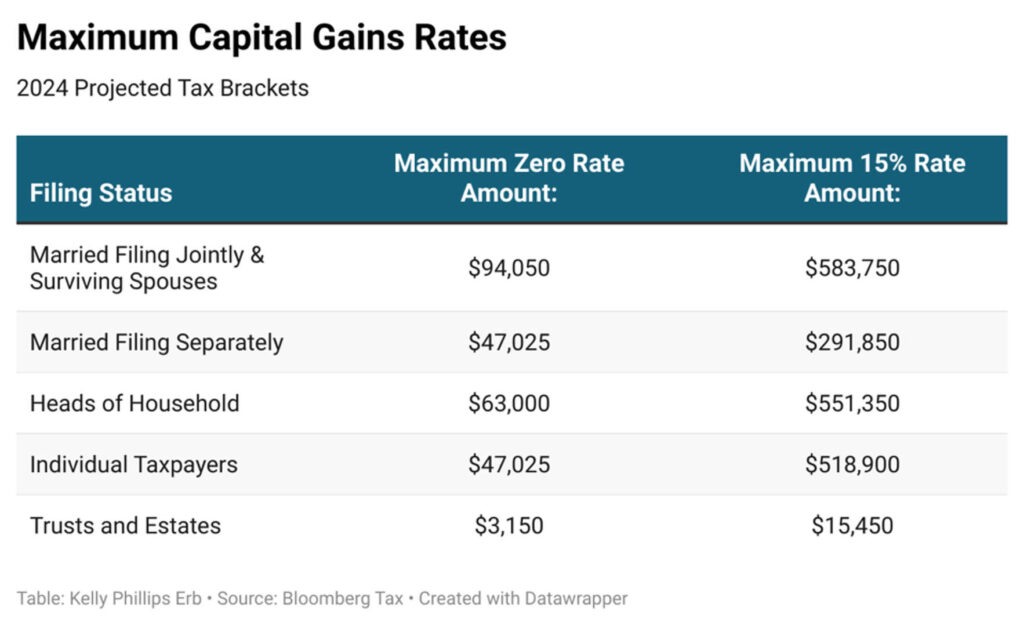
Personal Exemption amounts
Due to the TCJA, there will be no personal exemption amounts in 2024. Personal exemptions used to decrease your taxable income before you determined the tax due. You were generally allowed one exemption for yourself (unless you could be claimed as a dependent by another taxpayer), one exemption for your spouse if you filed a joint return, and one personal exemption for each of your dependents—but that’s no longer the case.
Standard Deduction amounts
Here are the projected standard deduction amounts for 2024:
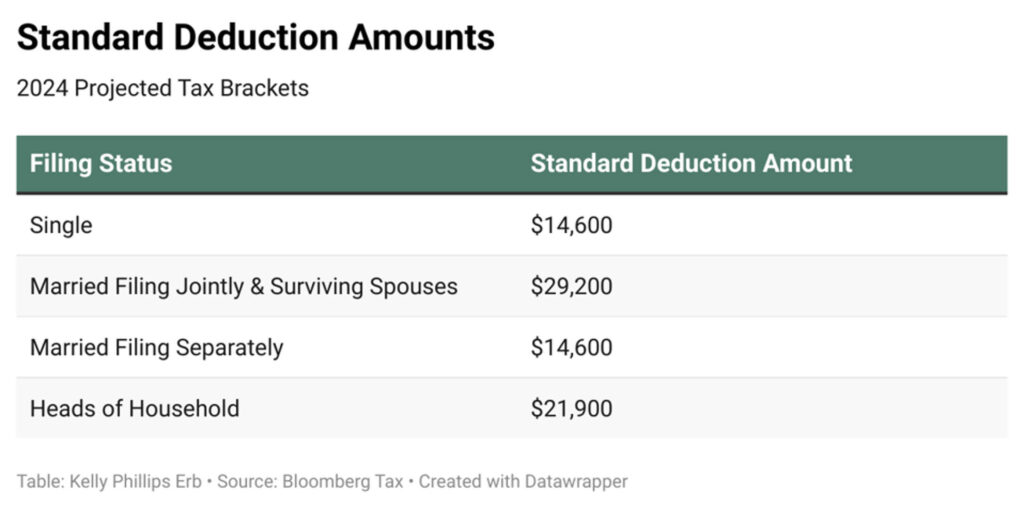
- $1,300, or
- the sum of $450 plus the individual’s earned income.
The additional standard deduction for the aged or the blind will be $1,550. The additional standard deduction amount will increase to $1,950 if the individual is unmarried and not a surviving spouse.
Kiddie Tax
Your child must pay taxes on their unearned income in 2024, but if that amount is more than $1,300 but less than $13,000, you may be able to elect to include that income on your return rather than file a separate return for your child.
Maximum amount of refundable Child Tax Credit
There’s a lot of chatter in Congress about making changes to the Child Tax Credit, but so far, there’s no action. If nothing changes, the maximum amount of the child tax credit that may be refundable is projected to be $1,700 in 2024.
Section 199A deduction
Sole proprietors and owners of pass-through businesses like LLCs, S corporations, and partnerships may be eligible for a deduction of up to 20% to lower the tax rate for qualified business income. The deduction is subject to threshold and phased-in amounts. For 2024, those amounts should look like this:
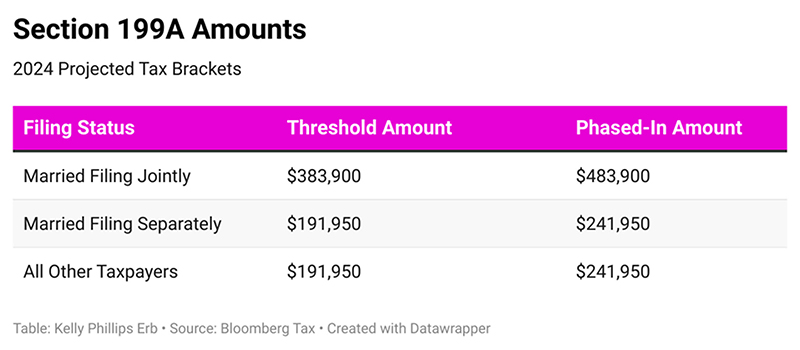
Student loan interest
Many student loans will shortly be entering repayment. For 2024, Bloomberg predicts that the $2,500 maximum deduction for interest paid on qualified education loans will begin to phase out for taxpayers with modified adjusted gross income above $80,000 ($165,000 for joint returns) and will completely phase out for taxpayers with modified adjusted gross income of $95,000 or more ($195,000 or more for joint returns).
IRAs
For 2024, Bloomberg predicts that the total contributions you make each year to all of your traditional IRAs and Roth IRAs can’t be more than $7,000 ($8,000 if you’re age 50 or older) or your taxable compensation for the year (whichever is smaller).
Federal estate tax exclusion
The federal estate tax exclusion for decedents dying will increase to $13,610,000 million per person or $27,220,00 million per married couple.
Gift tax exclusion
The annual exclusion for federal gift tax purposes is predicted to increase to $18,000 in 2024. That means you can gift $18,000 per person to as many people as you want with no federal gift tax consequences in 2024; if you split gifts with your spouse, that total is $36,000.
More information
Remember that these are just projections. The IRS will publish the official tax brackets and other tax numbers for 2024 later this year, likely in October.
The 2024 tax projections are just one of the features of Bloomberg Tax & Accounting. The full report is available here.
Contact Kleshinski, Morris & Morrison CPAs
If you need help with a tax issue or any type of professional accounting services, don’t hesitate to contact the experts at Kleshinski, Morrison & Morris CPAs. Reach us by phone at 419-756-3211, email to kmm@kmmcpas.com, or by filling out the contact form on this website at here.

